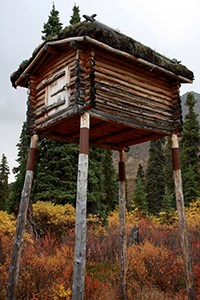
 2
2








 4
4








 3
3




I make a Maple Syrup instructional movie! Check it out HERE
SKIP books, get 'em while they're hot!!! Skills to Inherit Property
See me in a movie building a massive wood staircase:Low Tech Lab Movie
 4
4




John Daley Bendigo, Australia The Enemy of progress is the hope of a perfect plan
Benefits of rainfall collection https://permies.com/t/88043/benefits-rainfall-collection
GOOD DEBT/ BAD DEBT https://permies.com/t/179218/mortgages-good-debt-bad-debt




 1
1




John Daley Bendigo, Australia The Enemy of progress is the hope of a perfect plan
Benefits of rainfall collection https://permies.com/t/88043/benefits-rainfall-collection
GOOD DEBT/ BAD DEBT https://permies.com/t/179218/mortgages-good-debt-bad-debt
 2
2




I make a Maple Syrup instructional movie! Check it out HERE
SKIP books, get 'em while they're hot!!! Skills to Inherit Property
See me in a movie building a massive wood staircase:Low Tech Lab Movie
 5
5





Pecan Media: food forestry and forest garden ebooks
Now available: The Native Persimmon (centennial edition)




John C Daley wrote:There is evidence electric fences work.
We wrap trees with thin galvanised sheets of steel so there is a slippy pole effect for enough height to deter possums. It may work with bears.




Joshua Frank wrote:
John C Daley wrote:There is evidence electric fences work.
I think they probably work really well in many situations. It's just a big up front cost and effort, and it's easy to get wrong, and experimentation is difficult when failure is so expensive (i.e. you lose bees and hives, possibly all of them).
We wrap trees with thin galvanised sheets of steel so there is a slippy pole effect for enough height to deter possums. It may work with bears.
How do you attach the sheets to the trees securely but without damaging the trees?
A build too cool to miss:Mike's GreenhouseA great example:Joseph's Garden
All the soil info you'll ever need:
Redhawk's excellent soil-building series





 1
1




Joshua Frank wrote:How do you attach the sheets to the trees securely but without damaging the trees?
I make a Maple Syrup instructional movie! Check it out HERE
SKIP books, get 'em while they're hot!!! Skills to Inherit Property
See me in a movie building a massive wood staircase:Low Tech Lab Movie
 1
1




A human being should be able to change a diaper, plan an invasion, butcher a hog, conn a ship, design a building, write a sonnet, balance accounts, build a wall, set a bone, comfort the dying, take orders, give orders, cooperate, act alone, solve equations, analyze a new problem, pitch manure, program a computer, cook a tasty meal, fight efficiently, die gallantly. Specialization is for insects.
-Robert A. Heinlein




Nothing ruins a neighborhood like paved roads and water lines.




I make a Maple Syrup instructional movie! Check it out HERE
SKIP books, get 'em while they're hot!!! Skills to Inherit Property
See me in a movie building a massive wood staircase:Low Tech Lab Movie




Mike Haasl wrote:
Joshua Frank wrote:How do you attach the sheets to the trees securely but without damaging the trees?
I think there are a couple ways. Most people just nail into the tree which may very well do some damage.
A build too cool to miss:Mike's GreenhouseA great example:Joseph's Garden
All the soil info you'll ever need:
Redhawk's excellent soil-building series





 1
1




I make a Maple Syrup instructional movie! Check it out HERE
SKIP books, get 'em while they're hot!!! Skills to Inherit Property
See me in a movie building a massive wood staircase:Low Tech Lab Movie




A human being should be able to change a diaper, plan an invasion, butcher a hog, conn a ship, design a building, write a sonnet, balance accounts, build a wall, set a bone, comfort the dying, take orders, give orders, cooperate, act alone, solve equations, analyze a new problem, pitch manure, program a computer, cook a tasty meal, fight efficiently, die gallantly. Specialization is for insects.
-Robert A. Heinlein




A fourth way would be to attach some wood blocks to the tree with a rubber/stretchy cord. Then nail the stovepipe to those wood blocks. The cord would stretch as the tree grows so it doesn't get girdled.








A build too cool to miss:Mike's GreenhouseA great example:Joseph's Garden
All the soil info you'll ever need:
Redhawk's excellent soil-building series













Pecan Media: food forestry and forest garden ebooks
Now available: The Native Persimmon (centennial edition)

|
Could you hold this kitten for a sec? I need to adjust this tiny ad:
Rocket Mass Heater Resources Wiki
https://permies.com/w/rmh-resources
|




